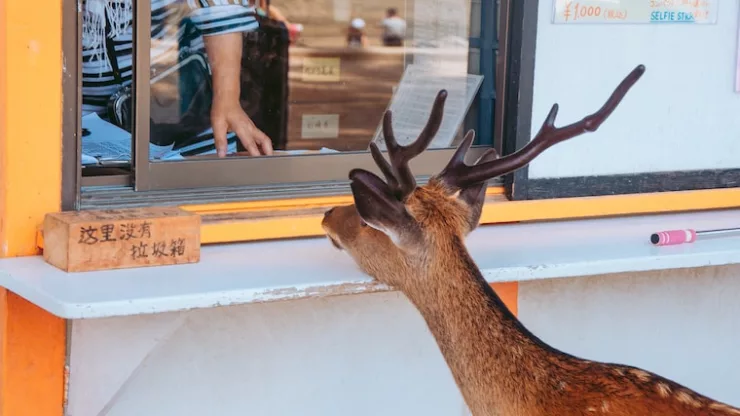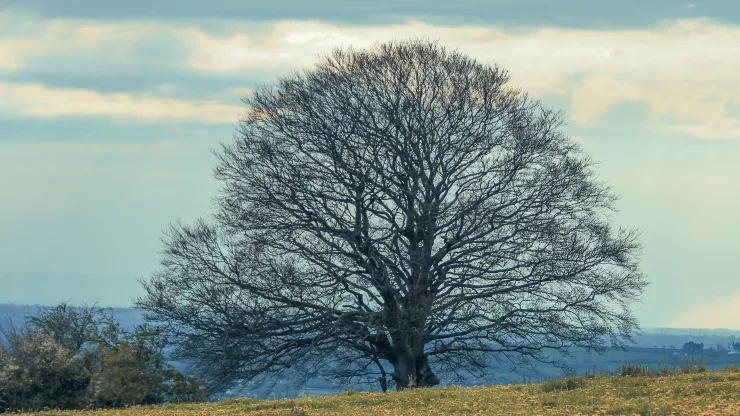Deer are a common sight in suburban neighborhoods and urban parks across North America.
The presence of these majestic animals provides an opportunity for residents to reconnect with nature and appreciate the beauty of wildlife.
However, as deer populations continue to grow in urban areas, they pose a significant challenge to coexistence with humans.
Deer can cause damage to gardens, crops, and property, and can also pose a threat to drivers on roads.
Finding a balance between human and wildlife needs is crucial to achieve a sustainable future with deer in urban areas.
Jump to Section
The Coexistence Challenge: Balancing Human and Wildlife Needs
The coexistence challenge involves finding ways to balance the needs of deer with those of humans in urban areas.
While humans require safe roads, intact gardens, and damage-free property, deer require adequate food, shelter, and space to roam.
The key to coexistence is to understand and respect the behavior of deer while implementing strategies to minimize conflicts with humans.
A collaborative approach involving wildlife experts, city officials, and residents is necessary to achieve a sustainable and harmonious relationship with deer in urban areas.
Understanding Deer Behavior in Urban Environments
Deer behavior in urban environments is different from that in rural areas. Urban environments provide a variety of food sources and shelter, making them attractive to deer.
Additionally, urban deer have fewer natural predators and can thrive in areas with a lower risk of predation.
Deer are most active at dawn and dusk and are most visible during the mating season, which occurs from October to December. Understanding deer behavior is crucial to implementing effective management strategies that minimize conflicts with humans.
Deer behavior in urban environments
| Behavior | Explanation |
|---|---|
| Feeding | Deer feed on a variety of plants, including gardens, crops, and ornamental plants. |
| Shelter | Deer seek shelter in wooded areas, shrubs, and other areas with cover. |
| Movement | Deer move along established paths and trails and are most active at dawn and dusk. |
| Mating | The deer mating season occurs from October to December, and male deer may become more aggressive during this time. |
Impacts of Deer Overpopulation on Urban Ecosystems
Deer overpopulation can have significant impacts on urban ecosystems.
Excessive browsing can damage or destroy plant species, leading to a decline in biodiversity.
Additionally, deer can cause damage to gardens, crops, and property, leading to significant economic losses.
Deer can also pose a threat to drivers on roads, causing accidents and fatalities.
Understanding the impacts of deer overpopulation is crucial to developing effective management strategies that promote a sustainable coexistence with deer in urban areas.
Innovative Solutions for Coexisting with Urban Deer
Innovative solutions are required to achieve a sustainable coexistence with deer in urban areas. One solution is the use of deer-resistant plants in gardens and landscaping.
Another solution is the use of repellents, such as noise-makers or sprays, to discourage deer from entering residential areas.
Physical barriers, such as fences or netting, can also be effective in preventing deer from accessing gardens or crops.
Additionally, providing alternative food sources, such as salt licks or feeding stations, can help reduce browsing damage.
Community Involvement: Engaging Residents in Deer Management
Engaging residents in deer management is crucial to achieving a sustainable coexistence with deer in urban areas.
Community involvement can help increase awareness of the challenges of coexisting with deer and promote a sense of responsibility for managing the deer population.
Residents can participate in monitoring deer populations, reporting deer sightings or damage, and implementing management strategies such as planting deer-resistant vegetation or providing alternative food sources.
Effective community involvement can lead to a more collaborative and sustainable approach to deer management.
Effective Deer Management Strategies for Urban Areas
Effective deer management strategies for urban areas involve a combination of population control and prevention measures. Population control measures may include culling, sterilization, or relocation of deer populations.
Prevention measures may include the use of physical barriers, such as fencing or netting, or the use of repellents to discourage deer from entering residential areas.
The use of deer-resistant vegetation or alternative food sources can also be effective in preventing excessive browsing damage.
Coexistence Success Stories: Lessons Learned from Other Cities
Many cities have successfully implemented strategies for coexisting with deer in urban areas.
For example, in Denver, Colorado, the Deer Management Plan involves a combination of population control measures, such as culling and sterilization, and prevention measures, such as the use of physical barriers and repellents.
In Eugene, Oregon, the Deer Management Plan involves a combination of population control measures and education and outreach efforts to engage residents in deer management.
Learning from the success stories of other cities can help inform effective management strategies in other urban areas.
The Future of Urban Deer Management: Adapting to Change
The future of urban deer management involves adapting to changing conditions, such as population growth, climate change, and urban development.
As urban areas continue to expand, the coexistence challenge with deer is likely to become more complex.
Effective management strategies must be flexible and adaptable, incorporating new technologies and approaches as they become available.
Additionally, community involvement must remain a critical component of deer management efforts, ensuring a collaborative and sustainable approach to coexisting with deer in urban areas.
Working Together for a Sustainable Future with Deer
Achieving a sustainable future with deer in urban areas requires a collaborative and innovative approach.
Effective strategies must balance the needs of humans with those of wildlife, while engaging the community in management efforts.
By understanding deer behavior, implementing effective management strategies, and learning from successful examples in other cities, we can achieve a harmonious relationship with deer in urban areas.
Together, we can work towards a sustainable future where humans and wildlife can coexist in harmony.
I’m a nature enthusiast and creator of Metro Wilds and have spent years exploring the great outdoors.
With a passion for environmental conservation and sustainability, I have dedicated my career to writing about the beauty and wonders of nature, as well as the threats facing our planet.
Contact me at [email protected] for assistance.





